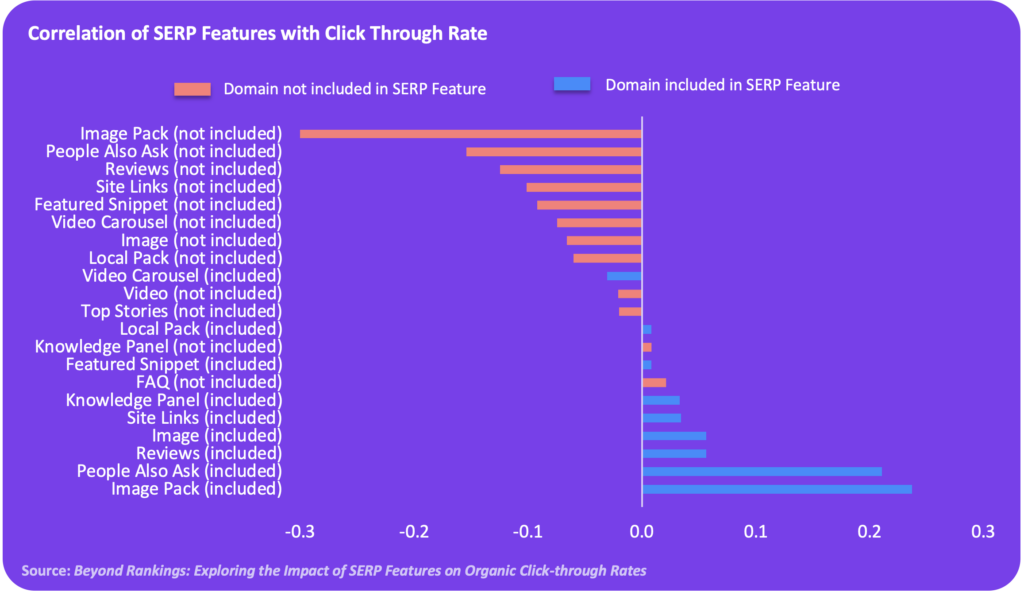In addition, while SERP features had a negative impact on CTR overall, the impact of individual features varies. For instance, video consoles have a negative impact on CTR while knowledge panels, which provide quick answers to user queries, had (perhaps counterintuitively) a positive impact on CTR. These impacts were true even when the authors examined whether a site was included as a source in the video carousel or knowledge panel or not.

Other SERP features’ impact largely depended upon whether a result was included in the feature or not. For instance, sites included in an image pack saw generally higher CTRs. However, sites that were not featured saw lower CTRs when an image pack was part of the SERP. Similarly, the people-also-ask feature resulted in a higher CTR for sites that were sources of the information provided, but lower for other sites shown on the SERP but not included in this particular feature.
Importantly, the positive effect of being included in the SERP feature only becomes evident from the second position onward.
The CTR of sites in the first position, regardless of whether the result is included within the SERP feature or not, were negatively influenced by SERP features.
It is worth noting that the impact of SERP features on CTR can vary depending on the specific circumstances. Additionally, certain types of SERP features may be more relevant or effective for certain types of searches or target audiences. Therefore, the authors state, it’s important to analyze your target audience’s search behavior and preferences when developing SEO strategies that take into account SERP features.
While SERP features can have a negative impact on overall organic CTR, they can also provide opportunities for increased visibility and engagement under the right circumstances. Understanding the impact of SERP features on organic CTR is crucial for developing effective SEO strategies that drive traffic to your website and ultimately conversions. By analyzing your target audience’s search behavior and preferences, you can identify which SERP features are most relevant to your business and optimize your website accordingly.
